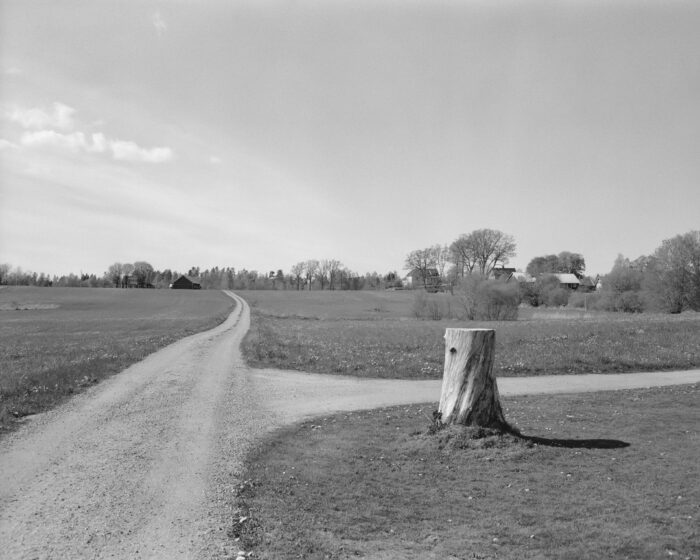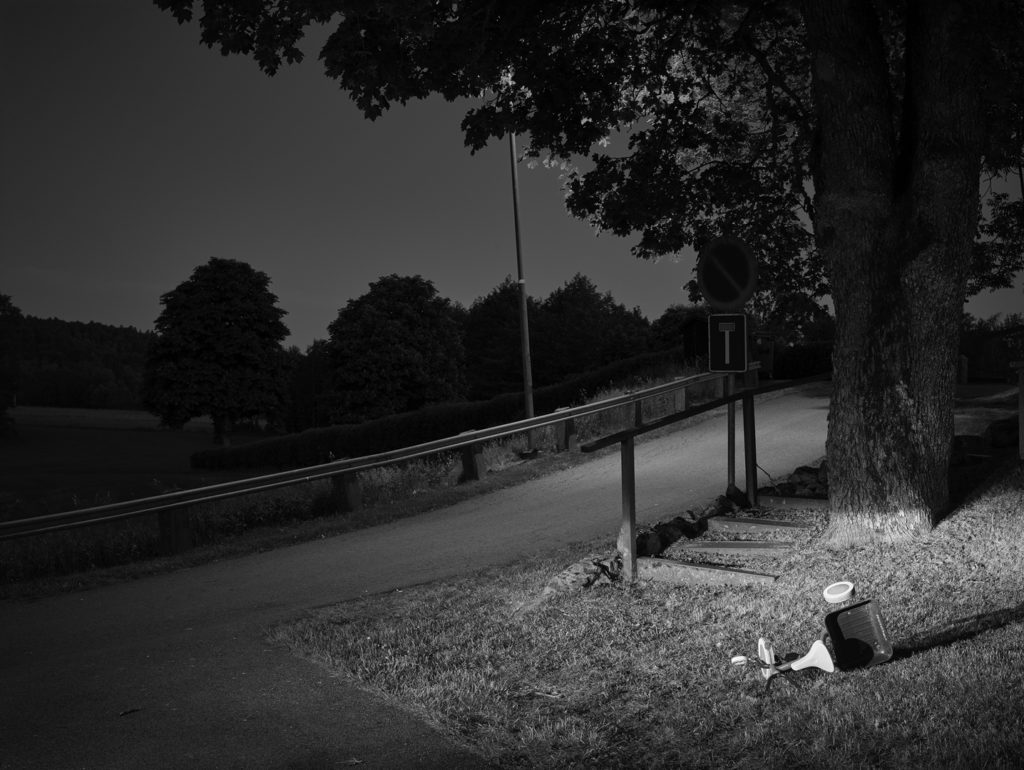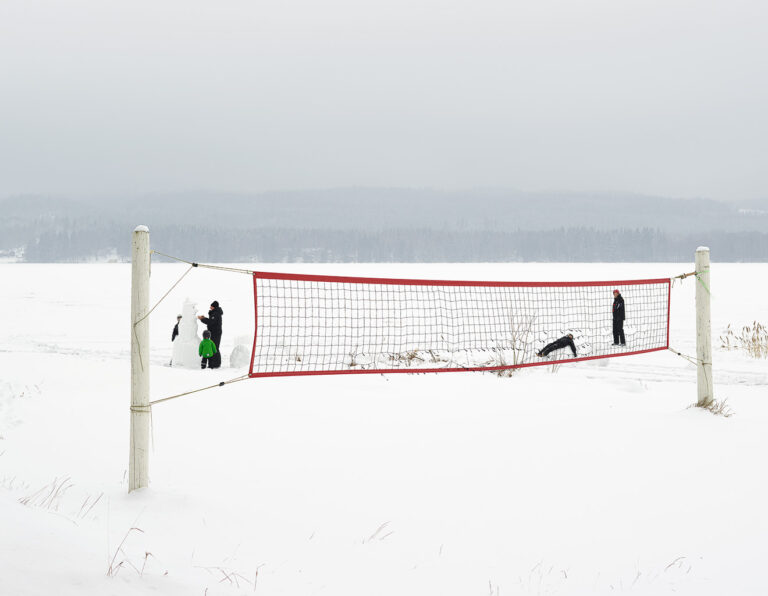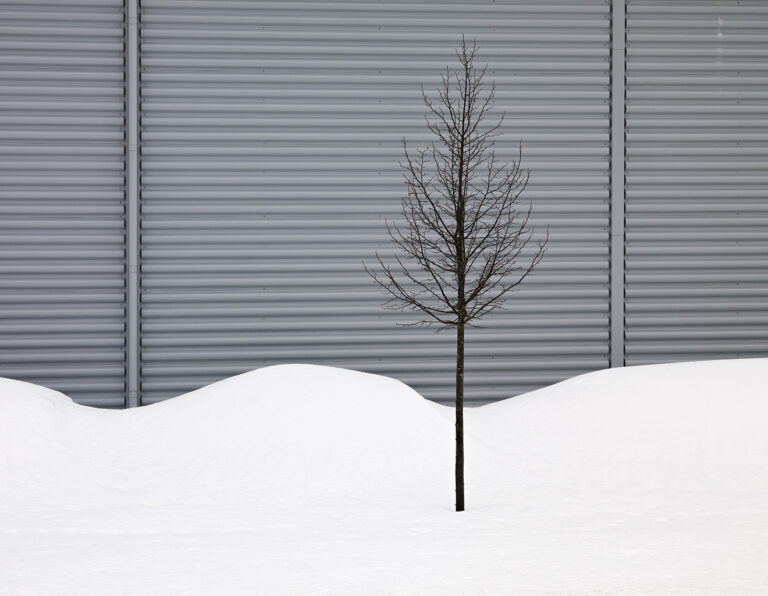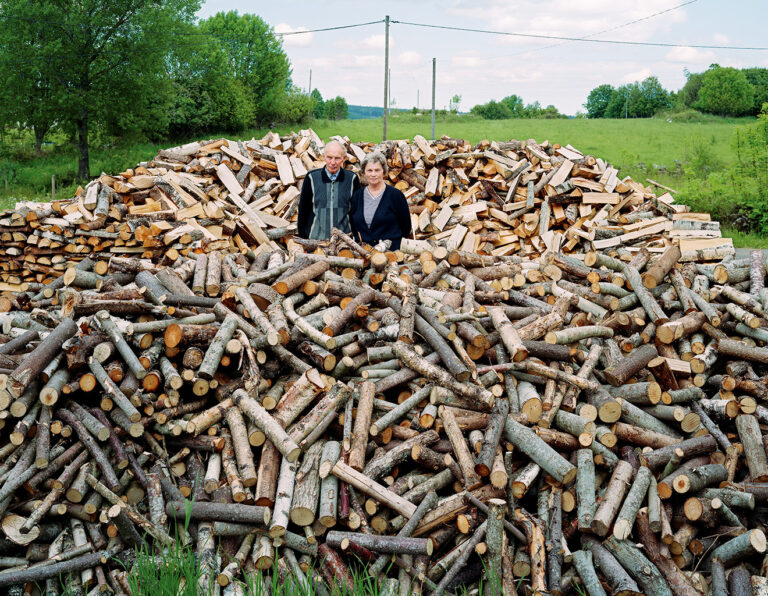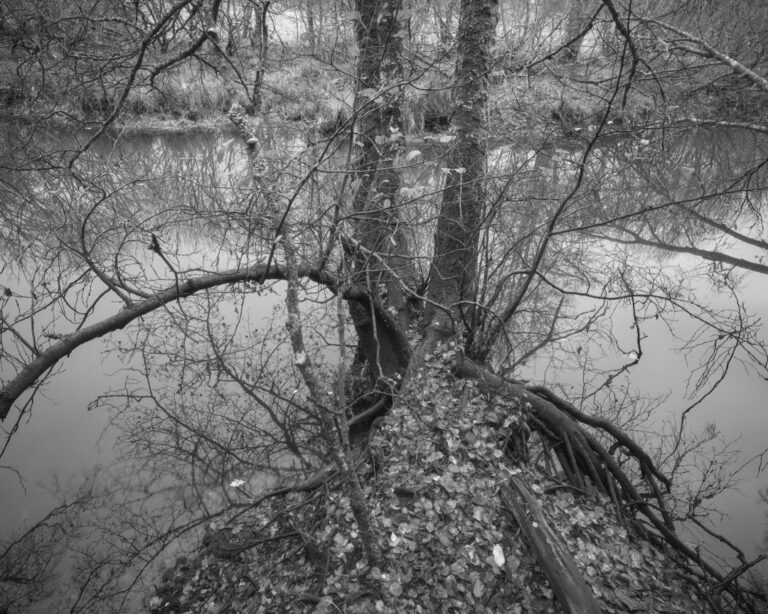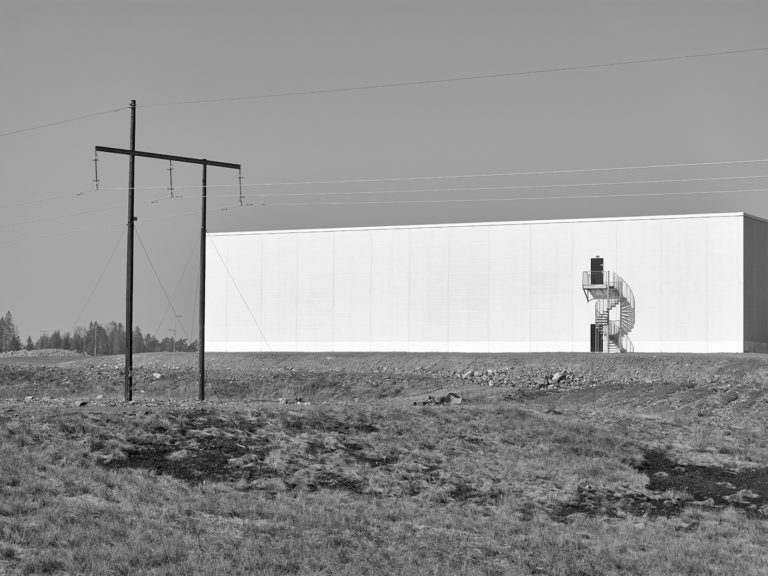Grusväg (gravel road) is not a book about gravel roads, but about it on the side. About what is revealed during a walk, in the movement forward. About what is behind the crest, which can not be foreseen in advance.The idea for the book emerged during a daily walk along a gravel road with the family dog Frasse. It was in June 2019. Throughout the summer, we followed new road sections, mainly in Västergötland, but in the following years also in Bohuslän, Småland and Skåne.
I got the inspiration from some early photos taken with a borrowed Rolleiflex. Bright, light, and with a long grayscale. They were made in my first darkroom – in Grandma’s attic. The year must have been 1971. The magnifier was a Uniprint with a simple glass holder. The Leonar paper. Soft as velvet. Silver rich.
I wanted to relive that feeling.
In darkness, I am searching for light like a moth.
A street lamp, a lit window, a neon sign, or the light of a summer night sky that never completely fades out. And the opposite: the winter days, when the darkness is grafted into days early, days that never really want to brighten up.
As I look at the blackened houses, the empty streets, the desolated park benches, the bikes in their stands, parked cars, I get the feeling that time has stopped and the surroundings, now quiet and still, await a new day’s life and movements.
This project has been released in a new book (2020) and has been exhibited at Abecita Art Museum, Borås
Faraway Nearby can be described as a photographic odyssey in the attempt to rediscover the landscape that has always been a part of me, and which I have felt both close and distant to.
In my photography, the landscape is of central importance, but I do not seek the sublime and unaffected. On the contrary. What interests me is how humans interact with the landscape and manifests its existence in a contemporary context.
The landscape opens out. And closes up. In space and time. It surrounds us in the present, withers in our forgetfulness or is sifted out from the past. The landscape is never static. It is constantly changing through geological, biological and climatological processes, as well as being transformed by man. The myth of the unspoiled landscape lives on, despite only a small portion of the earth’s surface being unaffected by our species.
For five years I have cruised the river Viskan, photographing landscapes, settlements, scenery, people and everyday life. My purpose has been to depict a fragment of early 21st-century Sweden.
Life is like the river, and the flowing river is like life. We are like the movement of the water. We are integrated with the cycle of life and the passing of time…
A land of shadows where the sunlight reaches only in spots and a jumble of vegetation closes around the black water that dimly reflects the sky
Exhibited at Abecita Art Museum, Borås, 2021
